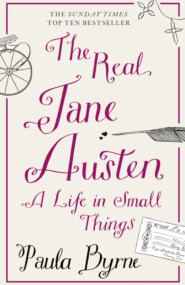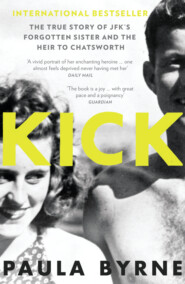По всем вопросам обращайтесь на: info@litportal.ru
(©) 2003-2024.
✖
Belle: The True Story of Dido Belle
Автор
Год написания книги
2019
Настройки чтения
Размер шрифта
Высота строк
Поля
Captain Lindsay would have possessed a well-thumbed copy of the Regulations and Instructions relating to His Majesty’s Service at Sea. Article XXXVIII of the rules for the captain or commander clearly stated that ‘He is not to carry Women to Sea, nor to entertain any Foreigners to serve in the Ship, who are Officers or Gentlemen, without Orders from the Admiralty.’8 (#litres_trial_promo) The official navy line was that wives could come on board when a ship was in port, but not go to sea. Prior to the Battle of Trafalgar, when the ship of the line HMS Prince was in dock in Portsmouth, one eyewitness reported that 450 women came on board, but that only fifty were actually wives of sailors serving on the ship. In other words, wives, girlfriends and an abundance of prostitutes would pile on board when a ship was at anchor, and there would be an orgy of drunkenness and debauchery. Once the crew’s needs had been satisfied in this way, the women were all supposed to be removed.
But the reality was that the rule against seagoing women was very often relaxed, especially for the wives of captains and officers.9 (#litres_trial_promo) Estimates vary as to the numbers of women actually at sea with the fleet, but there is ample anecdotal evidence of their presence aboard in the late eighteenth and early nineteenth centuries. One has only to consider the novels of one of English literature’s most navally connected novelists, Jane Austen.
Her brother, Captain Charles Austen, took his wife Fanny and their three children to live aboard his ship, the Namur. Fanny Austen’s surviving letters describe her making clothes for her little girls, reading in the ship’s library, and attending the ship’s theatre. Whenever she spent time ashore she was anxious to get back to her ‘home’ on board, ‘however uncomfortable that home may be’.10 (#litres_trial_promo) One of her daughters suffered from sea sickness, and Fanny discussed the possibility of leaving her to be raised by her aunt Jane, but in the end decided that the family should stay together on board ship.
In Jane Austen’s novel Persuasion there is a long discussion about the suitability of women living aboard ship. Captain Wentworth’s old-fashioned belief that a ship is no place for a woman is given short shrift by his sister, Mrs Croft, who is married to an admiral and has lived aboard five vessels, including a battleship. ‘Women may be as comfortable on board, as in the best house in England,’ she says. ‘I believe I have lived as much on board as most women, and I know nothing superior to the accommodation of a man of war.’ She has crossed the Atlantic four times, and says that ‘the happiest part of my life has been spent on board a ship’.11 (#litres_trial_promo)
Despite Mrs Croft’s protestations, life on board a man-of-war was hard for the wife of a sailor, even a captain. She had to share her husband’s hammock or bunk, and his daily ration of salted beef, dried peas, hardtack and cheese. She also had to try to stay out of the way of the ship’s daily activities. Outside the captain’s cabin, privacy was in short supply on a ship that might carry four hundred sailors and marines.
Childbirth at sea was not unknown, and sometimes a ship’s guns would be fired to hasten a difficult birth – a practice that gave rise to the saying ‘a son of a gun’. During the Napoleonic Wars, Captain Glascock of the Royal Navy wrote: ‘This day the surgeon informed me that a woman on board had been labouring in childbirth for twelve hours, and if I could see my way to permit the firing of a broadside to leeward, nature would be assisted by the shock. I complied with the request, and she was delivered of a fine male child.’12 (#litres_trial_promo) Fanny Austen gave birth to her fourth child on board the Namur, but tragically she died two weeks later, as did the baby. The Austen family lamented that she had not been removed to land sooner.
There are even records of women assisting aboard a ship in battle, attending the wounded or carrying gunpowder.13 (#litres_trial_promo) Maria the liberated slave may have tended to the wounded during the siege of Morro castle as well as tending to the sexual and domestic needs of Captain Lindsay. At the end of the war he appears to have avoided getting into any trouble for bringing her back to England. And when he returned to sea, he left behind an extraordinary arrangement for the care of his ‘mulatto’ daughter.
3
3. (#ulink_4d8244d0-bd57-5f15-8852-4fc8df715b48) ‘The Abolition of the Slave Trade’: caricature by Isaac Cruikshank of a slave woman being lashed aboard ship
The handsome Royal Navy captain with aristocratic blood in his veins takes his prize, an African slave. Like thousands of other slaves, the terrified woman had been branded with the initials of her former owner. Now, though, she belongs to Captain Lindsay. She knows what to expect: rape and further servitude. Never could she have dreamed that the encounter would bring into the world a daughter who would influence the course of history. Like those of thousands of other women who were taken from Africa and sold into slavery Maria’s inner life is unknown to us. We cannot know her, but it is possible to reconstruct the kind of life she lived before being taken aboard the Trent.
The enforced removal of Africans as a labour force to work the West Indian sugar plantations was conducted via the slave ship. It has been estimated that through the long history of the slave trade some twelve million Africans were loaded and transported onto Atlantic slave vessels.1 (#litres_trial_promo) Sometimes known as a ‘Guineaman’, the slave ship is the enduring symbol of the horrors of the transatlantic trade, a floating dungeon whose stench could be smelt from miles away, its wake trailed by dead-eyed sharks awaiting their prey. Cabin boy Samuel Robinson, aboard a slaver in 1800, was terrified by the sight of these predators, and the knowledge of what would happen to anyone unfortunate enough to go overboard: ‘The very sight of him slowly moving around the ship, with his black fin two feet above the water, his broad snout and small eyes, and the altogether villainous look of the fellow, make one shiver, even when at a safe distance.’2 (#litres_trial_promo)
Before they set eyes on the ocean the Africans had been captured, marched in ‘coffles’, chained together, and sold at market. Many were bought and sold several times along the way to the coast. The process was brutal and degrading. Families were torn apart, and the captives prodded and poked like animals, assessed for their value and given a price. ‘Vendue’ (sale) masters knew what they were looking for: good teeth, clear eyes, strong limbs, full height and no obvious signs of disease. Women who were ‘long-breasted’ were passed over, since this was taken to be an indication of age.3 (#litres_trial_promo) Bellies were checked for evidence of pregnancy.
Slave ‘surgeons’ were brought in for preboarding triage, with painful and humiliating examinations being undertaken. Breasts and genitalia were scrutinised. Thomas Aubrey, an early-eighteenth-century slave surgeon, noted in his log that ‘Sometimes the Men have Gonorrhoeas, or Ulcers in the Rectum, or Fistulas, and the Women Ulcers in the Neck of the Matrix.’4 (#litres_trial_promo) Slaves were checked for signs of smallpox, a disease that could wipe out most of the ‘cargo’.5 (#litres_trial_promo)
Thanks to the testimony of ex-slave Mary Prince we have an eyewitness account, from a female perspective, of the desperate, shameful process of being sold at a vendue market.6 (#litres_trial_promo) ‘I have been a slave,’ she wrote. ‘I have felt what a slave feels, and I know what a slave knows.’7 (#litres_trial_promo) She was born in 1788, to an enslaved family in Bermuda. When she was a young girl she and each of her sisters was dressed in an osnaburg, a rough linen shroud-like garment, to be taken to the marketplace.
At length the vendue master, who was to offer us for sale like sheep or cattle, arrived, and asked my mother which was the eldest. She said nothing, but pointed to me. He took me by the hand, and led me out into the middle of the street, and, turning me slowly round, exposed me to the view of those who attended the vendue. I was soon surrounded by strange men, who examined and handled me in the same manner that a butcher would a calf or a lamb he was about to purchase … The bidding started at a few pounds, and gradually rose to 57 … The people who stood by said that I had fetched a great sum for so young a slave. I then saw my sisters led forth, and sold to different owners. When the sale was over, my mother hugged and kissed us, and mourned over us, begging us to keep a good heart. It was a sad parting; one went one way, one another, and our poor mammy went home with nothing.8 (#litres_trial_promo)
Mary Prince was sold to a family in the West Indies. She eventually came to England, secured her freedom and became an important advocate of the abolition movement.
We do not know whether Dido’s mother was bought in Africa, then captured by Lindsay while on the way to the Caribbean, or whether she had already been working on a plantation when she came into his hands. In the eighteenth century about six million slaves were carried across the Atlantic to the New World. Fifteen per cent – almost one million Africans – perished during the ‘middle passage’, the notorious journey from Africa to the Americas.
The triangular trading system saw ships departing from Europe for African markets with manufactured goods such as guns, ammunition, copper, cloth and trinkets, which were traded for purchased or kidnapped Africans, who were transported across the Atlantic as slaves; the slaves were then sold, or traded for raw materials such as sugar, rum and tobacco; which would be transported back to Europe to complete the voyage.
Purpose-built slave ships were built in Liverpool and Bristol. Typically two- or three-masted vessels, their average size was two hundred tons. Ventilation holes in the sides of the ship below the level of the upper decks were a tell-tale sign of a slaver. Nets were installed around the sides of the ship, to prevent the slaves from throwing themselves overboard.9 (#litres_trial_promo)
If Dido’s mother was indeed sold to a Spanish trader, we may gain an idea of what Captain Lindsay encountered when he first saw her from a slightly later account by the Reverend Robert Walsh, who was present when a British naval patrol intercepted an illegal Spanish or Portuguese slave ship, the Feloz, commanded by Captain José Barbosa, bound for Brazil. Walsh described the ship, with its enormous swivelling gun, and large kettles for cooking – ‘the usual apparatus of a slaver’ – and witnessed the scene of horror when the vessel was boarded. They found 562 slaves, ‘branded like sheep with the owner’s marks of different forms … as the mate informed me with perfect indifference, “burnt with the red-hot iron”’.10 (#litres_trial_promo) Walsh was horrified by the stench, the heat and the cramped conditions. He could scarcely believe
how it was possible for such a number of human beings to exist, packed up and wedged together as tight as they could cram, in low cells three feet high, the greater part of which, except that immediately under the grated hatchways, was shut out from light or air, and this when the thermometer, exposed to the open sky, was standing in the shade, on our deck, at 89 degrees. The space between decks was divided into two compartments 3 feet 3 inches high; the size of one was 16 feet by 18 and of the other 40 by 21; into the first were crammed the women and girls, into the second the men and boys: 226 fellow creatures were thus thrust into one space 288 feet square and 336 into another space 800 feet square, giving to the whole an average of 23 inches and to each of the women not more than 13 inches. We also found manacles and fetters of different kinds, but it appears that they had all been taken off before we boarded.
The Reverend noted that all of the slaves on board the Feloz were naked.
From the moment the female slaves set manacled foot on ship, they were marked out as sexual fodder. Their naked flesh incited the lust of the sailors, who groped them and made choices as to their favourites. The slaver turned abolitionist John Newton recalled how, ‘naked, trembling, terrified, perhaps almost exhausted with cold, fatigue and hunger’, the women and girls were ‘exposed to the wanton rudeness of white savages’. ‘The poor creatures,’ he saw, ‘cannot understand the language they hear, but the looks and manners of the speakers are sufficiently intelligible. In imagination, the prey is divided, upon the spot, and only reserved until opportunity offers.’11 (#litres_trial_promo)
On British slave ships, the women were kept in separate quarters from the males. ‘From the women there is no danger of insurrection, and they are carefully kept from the men; I mean, from the black men,’ noted freed slave turned abolitionist Ottobah Cugoano. But ‘it was common for the dirty filthy sailors to take the African women and lie upon their bodies’.12 (#litres_trial_promo) It was not true that women did not ever rebel against their lot. As we will see, female slaves had their own methods of insurrection.
John Newton noted the actions of a sailor called William Cooney, who ‘seduced a slave down into the room and lay with her brutelike in view of the whole quarter deck’. The woman (number 83) was already pregnant. Cooney was put in irons as a punishment. ‘If anything happens to the woman I shall impute it to him, for she was big with child,’ Newton wrote.13 (#litres_trial_promo) It was for raping a pregnant woman so brutally that Cooney was punished. In general, the sexual abuse of female slaves aboard ship was simply part of the institutional violence of the Guineamen. Rape was used as a means by which to humiliate African men, who were powerless to protect their wives, mothers and daughters. Women were treated as property by sailors and captains. Sexual compliance was expected of them, and they conformed to expectations. The white males justified their abuse by expressing their belief that black women were promiscuous. If they refused sexual advances they would be flogged, or their children would be punished. Female slaves had to deal with the repercussions of their harassment, and many ‘mulatto’ children were born aboard the slave ships.
Caricatures of the late eighteenth century conform to racial stereotypes. African women are almost invariably drawn with large, pendulous, naked breasts, protruding bottoms, thick lips. On the one hand African women were dehumanised, herded naked like animals. But on the other they were clearly also sexually desirable, the objects of unbridled lust.
One of the most compelling eyewitness reports of the slave ships came from the abolitionist campaigner and writer Olaudah Equiano, a freed slave whose Interesting Narrative of the Life of Olaudah Equiano, Or Gustavus Vassa, The African was first published in 1789. He had been bought by Michael Pascal, a lieutenant in the Royal Navy who renamed him ‘Gustavus Vassa’, after King Gustav I of Sweden. Though doubts have been cast on its veracity, his autobiography remains one of the most important ‘slave narratives’.14 (#litres_trial_promo) He gives a graphic account of the treatment of slave women on internal voyages between the colonies:
I used frequently to have different cargoes of new negroes in my care for sale; and it was almost a constant practice with our clerks, and other whites, to commit violent depredations on the chastity of the female slaves; and these I was, though with reluctance, obliged to submit to at all times, being unable to help them. When we have had some of these slaves on board my master’s vessels to carry them to other islands, or to America, I have known our mates to commit these acts most shamefully, to the disgrace, not of Christians only, but of men. I have even known them gratify their brutal passion with females not ten years old; and these abominations some of them practised to such scandalous excess, that one of our captains discharged the mate and others on that account. And yet in Montserrat I have seen a negro man staked to the ground, and cut most shockingly, and then his ears cut off bit by bit, because he had been connected with a white woman who was a common prostitute: as if it were no crime in the whites to rob an innocent African girl of her virtue; but most heinous in a black man only to gratify a passion of nature, where the temptation was offered by one of a different colour, though the most abandoned woman of her species.
From the other side of the racial divide, James Stanfield was perhaps the first ‘common tar’ to write about the horrors of the slave trade. In 1788, just as Equiano was preparing his Interesting Narrative for the press, Stanfield wrote Observations on a Guinea Voyage, in a Series of Letters Addressed to the Rev. Thomas Clarkson. A year later he published The Guinea Voyage, A Poem in Three Books. In both the prose work and the poem, he vividly and compellingly described the terrors of the slaver ships, coining the phrase ‘floating dungeon’.15 (#litres_trial_promo) Stanfield’s writings were serialised in newspapers in Britain and America, and shocked their readers. His evidence that the slave trade was extremely destructive of the morals of English sailors as well as the lives of African slaves gave an additional argument to the abolitionist cause.
Stanfield’s accounts are striking for his depiction of the suffering of the female slaves. Time and again his poem re-enacts the particular abominations heaped on the women. He vividly describes a woman in childbirth, and her sorrow in giving birth to a baby born into slavery; two women who jump overboard arm in arm in a suicide pact; the rape of a nine-year-old girl by a captain; the barbaric flogging of a slave woman tied to a captain’s bedpost so he can witness the suffering on her face and hear her screaming in agony. Stanfield dressed her wounds.
In an attempt to show a slave ship from an African’s perspective, and to emphasise and humanise the sufferings of the slaves, Stanfield depicts a beautiful female slave, Abyeda, who has been kidnapped – ‘torn from all human ties’. Abyeda is on the point of marriage to her beloved, Quam’no, when she is seized. Trying to save her, he is killed. She is taken to the ship and lashed. As she cries out, her fellow women cry out with her. She is flogged to death: ‘Convulsive throbs expel the final breath’.16 (#litres_trial_promo) She may have been a fictional invention, but her story was all too real.
John Newton noted how one sailor, disturbed by the sound of an African baby crying, tore the child out of its mother’s arms and threw it overboard.17 (#litres_trial_promo) The mother was saved, as ‘she was too valuable to be thrown overboard’.18 (#litres_trial_promo) At night on the ships, the women could be heard singing. The abolitionist author Thomas Clarkson, who wrote the first comprehensive history of the slave trade, described their powerful lamentations:
In their songs they call upon their lost Relations and Friends, they bid adieu to their Country, they recount the Luxuriance of their native soil, and the happy Days they have spent there … With respect to their singing, it consisted of songs of lamentation for the loss of their country. While they sung they were in tears: so that one of the captains, more humane probably than the rest, threatened a woman with a flogging because the mournfulness of her song was too painful for his feelings.19 (#litres_trial_promo)
Some women sang songs of resistance. Others resorted to hunger strike, only to face the dreaded ‘speculum oris’, a metal device employed to open the mouth for force-feeding. A dead slave was no good to anyone, least of all to the slave captain who had purchased her and hoped to sell her for a good price. Clarkson wrote about female slaves who went insane while chained to the ship’s mast.
The level of brutality on a slave ship was almost always determined by the conduct and character of the captain. The slaving captains had a vested interest in looking after their slaves, who were after all their property. Mortality rates dropped at the end of the eighteenth century with improved diet and medicine. Concentrated lemon and orange juice became compulsory issue in the British Navy in 1795, and many slavers followed suit, greatly reducing the prevalence of scurvy. Slaves were even inoculated against smallpox.
But whilst diet and medicine were improved in order to protect the slave traders’ investments, the mental and physical atrocities continued, partly because of the fear of insurrection by the slaves – although captains could always claim insurance for slaves who rebelled and were killed in retaliation, and thrown overboard to the hungry sharks.
Many captains were sadists who enjoyed inflicting pain on their slaves. Stanfield’s eyewitness account of Captain David Wilson’s ‘demon cruelty’ is shocking in the extreme. Wilson carried a ‘parcel of trade knives’ to hurl at slaves and crew. He beat his chef to death for burning his meat, and also killed his second mate. He didn’t care who he flogged: ‘pallid or black’, both sailors and slaves were victims of his brutality.
In 1792, slave trader Captain John Kimber was brought to trial for the murder of two female slaves. It was common practice on slave ships to make the slaves dance as a form of exercise (and degradation), usually to the ‘music’ of the whips. Kimber was alleged to have flogged to death a pregnant fifteen-year-old girl who had refused to dance naked for him. Her courageous, proud refusal cost the girl her life, but her story caught the attention of the abolitionist MP William Wilberforce, who accused Kimber of murder. Although he was acquitted, the story garnered considerable press in favour of the abolitionist cause. Cartoonist and satirist Isaac Cruikshank’s caricature depicts the half-naked ‘virjen’ girl suspended by her ankle from a pulley while Kimber looks on lasciviously. Three naked slave women sit in the background, while two sailors on the extreme right walk away, saying, ‘My Eyes Jack our Girls at Wapping are never flogged for their modesty,’ and ‘By G-d that’s too bad if he had taken her to Blackwall all would be well enough, Split me I’m allmost sick of this Black Business’ (Blackwall was one of the main shipyards on the Thames in London). The Kimber trial was viewed as a moral victory for the abolitionists, because it established the principle that slave captains could be called to account for murder.
James Stanfield claimed that the mere sight of the African coastline would transform the mildest captain into an enraged madman, bringing out his heart of darkness.20 (#litres_trial_promo) The power of the captain was absolute. One vicious captain, facing a ‘rage for suicide’ among his human cargo, made an example of a female slave by lowering her into the shark-infested waters on a rope: she was bitten in half. Sharks were an ever-present threat to recalcitrant slaves. They circled the ships ‘in almost incredible numbers … devouring with great dispatch the dead bodies of the negroes as they are thrown overboard’.21 (#litres_trial_promo)
Many of the abolitionists took up the rallying cry that the slave trade degraded both white and black, that the sailors were treated almost as badly as the slaves. Everyone was brutalised.
But there was another side to master/slave relations. William Butterworth, a sailor on the slave ship Hudibras, published an account of his travels in which he dwelt at length on his admiration for a slave called Sarah. ‘Ever lively! Ever gay!’, she was a superb dancer, and charmed everyone with her ‘sprightliness’ and ‘good nature’. She was ‘universally respected by the ship’s company’. Butterworth’s captain, Jenkins Evans, selected Sarah to be one of his favourites, or ‘wives’.22 (#litres_trial_promo) This was not unusual. On the slaver Charleston, the captain and officers took three or four ‘wives’ each for the journey.23 (#litres_trial_promo)
Sarah was suspected of being involved in a plot to overthrow the ship. It was not unknown for slave women and children to be involved in rebel plots against the sailors. Because they were given greater freedom than the male slaves, they were able to take messages and surreptitiously pass weapons to them, allowing them to hack off their shackles and fight back. Despite Sarah’s involvement in the plot against Captain Evans, he spared her life.
Other female slaves who were quick to learn English and could help to maintain order were given positions of trust. Known as ‘guardians’ or ‘confidence slaves’, some of them became cooks or made clothes, and were given ‘wages’ of brandy or tobacco.
Sea surgeon Thomas Boulton was mesmerised by a black slave he called Dizia – ‘who did my piece of mind destroy’, as he wrote in a poem which alleged that she also wielded power over the captain: ‘Whose sooty charms he was so wrapt in,/He strait ordain’d her second captain’.24 (#litres_trial_promo) The power exerted by the female slave over her master conformed to the sexual stereotyping of African women. Equally, many white masters raped and seduced female slaves as a way of emasculating, humiliating and punishing male ones: one master was so besotted with his slave lover that he ‘cut off the lips, upper lip almost close to her Nose, of his Mulatto sweetheart, in Jealousy, because he said no Negroe should ever kiss those lips he had’.25 (#litres_trial_promo)
However, the exceptionally close interaction between white and black, in both the slave ships and the plantation houses, created unusual psychological, moral and ethical situations. Can a relationship between a white captain and a slave woman within the British Empire in the eighteenth century ever be considered anything other than sexual exploitation? Could there ever be a consensual relationship between black and white, slave and captain? The short answer is yes.
When Mary Prince published her ‘slave narrative’ in 1831 she was advised not to mention her seven-year affair with a white man, Captain Abbot. Prince’s editors were keen to present her as an innocent victim, and it’s striking that they were uncomfortable with her revelation of this affair. Only later did Prince reveal the details of her liaison with Captain Abbot, which ended when she found her lover in bed with one of her friends. The jealousy she felt shows that she did have feelings for her captain – though there was also another factor, in that she had by this time converted to Christianity, and her ministers urged her to end the affair.
Thomas Thistlewood, a plantation overseer in Jamaica, lived openly with a female slave named Phibbah, and they were together for thirty-three years. In his will he requested that his executors should buy her and arrange for her to be ‘manumitted’ (formally freed). She eventually became a property-owner and a woman of means, providing for her extended family. Phibbah was clever and articulate, and managed to negotiate with adroitness the very delicate balance of being the black mistress of a white master. She was highly regarded within both the slave and the white communities. The careful details Thistlewood kept in his diary of their life together as ‘husband and wife’ suggest a deeply affectionate connection.
Both suffered when they were parted, sent one another presents, cared for each other in illness, cried together when their beloved son ‘Mulatto John’ died at the age of twenty, and engaged in furious jealous quarrels, although they always made up. Their sexual relationship seems to have been fully consensual: Thomas noted the times that she refused to sleep with him. Other slaves, with less status and power, had no such sway.
Nevertheless, Thistlewood’s relationship with his ‘wife’ Phibbah did not stop him from pursuing other women, who were powerless to prevent his sexual assaults. He abused and sexually exploited many of his female slaves (and indeed those from other plantations), keeping a careful record of his sexual conquests alongside his notes on sugar production.
Thomas Thistlewood’s journal conforms to the stereotyping of black women and their sexuality. In his imagination, black women were sexually insatiable, while white women were passive. Bizarrely, he claimed that African women who ate too much sugar cane became ‘loose and open, as tho’ they [had] just been concern’d with men’.26 (#litres_trial_promo) His own sexual preference was always for black women – as was his nephew John’s. John Thistlewood went out to Jamaica to work for his uncle. When he was propositioned by a white prostitute he declined, because he ‘much preferred a Negro wench’.27 (#litres_trial_promo)











